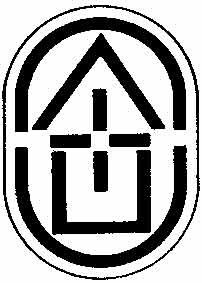
New Age is a range of spiritual or religious practices and beliefs which rapidly grew in Western society during the early 1970s. Its highly eclectic and unsystematic structure makes a precise definition difficult. Although many scholars consider it a religious movement, its adherents typically see it as spiritual or as unifying Mind-Body-Spirit, and rarely use the term New Age themselves. Scholars often call it the New Age movement, although others contest this term and suggest it is better seen as a milieu or zeitgeist.
The occult, in the broadest sense, is a category of esoteric supernatural beliefs and practices which generally fall outside the scope of organized religion and science, encompassing phenomena involving otherworldly agency, such as magic and mysticism and their varied spells. It can also refer to supernatural ideas like extra-sensory perception and parapsychology. Literally, the term simply means "hidden", and is used in this sense in astronomy, for example when a star is "occulted" by the moon, i.e. passes from view as the moon moves in front of it. In the sense of parapsychology, the same Latin root indicates that the phenomenon is "hidden" from the physical, bodily senses.

Rosicrucianism is a spiritual and cultural movement that arose in early modern Europe in the early 17th century after the publication of several texts announcing to the world a new esoteric order. Rosicrucianism is symbolized by the Rosy Cross or Rose Cross. There have been several Rosicrucian organizations, since the initial movement was founded, including the Order of the Golden and Rosy Cross (1750s–1790s), the Societas Rosicruciana in Anglia (1865–present), and the Hermetic Order of the Golden Dawn (1887–1903).

The Ancient and Mystical Order Rosæ Crucis (AMORC), also known as the Rosicrucian Order, is the largest Rosicrucian organization in the world. It has various lodges, chapters and other affiliated bodies throughout the globe, operating in 19 different languages. It operates as a fraternal order in the mystical Western Esoteric Tradition
Coitus reservatus, also known as sexual continence, is a form of sexual intercourse in which a male does not attempt to ejaculate within his partner, avoiding the seminal emission. It is distinct from death-grip syndrome, wherein a male has no volition in his emissionless state.

FUDOSI or FUDOESI was a federation of autonomous esoteric or mystical orders and societies, founded on August 14, 1934, in Brussels, Belgium, and disbanded in 1951. It was opposed by the similarly named Fédération Universelle des Ordres, Fraternités et Sociétés Initiatiques (FUDOFSI).

Ralph Maxwell Lewis, the son of Harvey Spencer Lewis, was the Imperator of Rosicrucian organisation, the Ancient Mystical Order Rosae Crucis (AMORC), from 1939 to 1987. He is the author of a number of books regarding mysticism, most of which are available from the AMORC. Ralph Maxwell Lewis was born in New York City. His father, Harvey Spencer Lewis, who was the first Imperator of AMORC for North and South America was born in New Jersey and was of Gallic origin, being descended from Sir Robert Lewis, former American colonizers.

Harvey Spencer Lewis F.R.C., S:::I:::I:::, 33° 66° 95°,, a noted Rosicrucian author, occultist, and mystic, was the founder in the US and the first Imperator of the Ancient and Mystical Order Rosae Crucis (AMORC), from 1915 until 1939.
FUDOFSI, headed by Constant Chevillon (1880–1944), was a federation of independent esoteric orders similar to FUDOSI, but strongly opposed to the other group.
Constant Chevillon was a French occultist who was Grand Master of the Freemasonry Rite of Memphis-Misraïm and head of FUDOFSI and other occult societies.

Fraternitas Rosae Crucis is a Rosicrucian fraternal organization established in the United States by Paschal Beverly Randolph in 1856, and is the oldest Rosicrucian Order founded in the US. They also operate Beverly Hall Corporation and the Clymer Health Center in Quakertown, Pennsylvania.
The following outline is provided as an overview of and topical guide to spirituality:

Paschal Beverly Randolph was an American medical doctor, occultist, spiritualist, trance medium, and writer. He is notable as perhaps the first person to introduce the principles of erotic alchemy to North America, and, according to A. E. Waite, establishing the earliest known Rosicrucian order in the United States.

The Rose Cross is a symbol largely associated with the legendary Christian Rosenkreuz; Christian Kabbalist, alchemist, and founder of the Rosicrucian Order. The Rose Cross is a cross with a rose at its centre, often red, golden or white and symbolizes the teachings of a Western esoteric tradition with Christian tenets.

Western esotericism, also known as esotericism, esoterism, and sometimes the Western mystery tradition, is a term scholars use to classify a wide range of loosely related ideas and movements that developed within Western society. These ideas and currents are united since they are largely distinct both from orthodox Judeo-Christian religion and Age of Enlightenment rationalism. It has influenced various forms of Western philosophy, mysticism, religion, pseudoscience, art, literature, and music.
The Order of the Temple of the Rosy Cross (OTRC) was an early 20th century theosophical group. It was founded in 1912 by leaders of the Theosophical Society, including Annie Besant, Marie Russak and James Ingall Wedgwood.

Kenneth Robert Henderson Mackenzie was an English linguist, orientalist, autodidact and member of the S.R.I.A.
Fraternity of the Hidden Light is a magical organization and "Aquarian Age" mystery school in the Western Mystery Tradition that teaches occult sciences.
According to some literary and religious studies scholars, modern Theosophy had a certain influence on contemporary literature, particularly in forms of genre fiction such as fantasy and science fiction. Researchers claim that Theosophy has significantly influenced the Irish literary renaissance of the late 19th and early 20th centuries, notably in such figures as W. B. Yeats and G. W. Russell.










